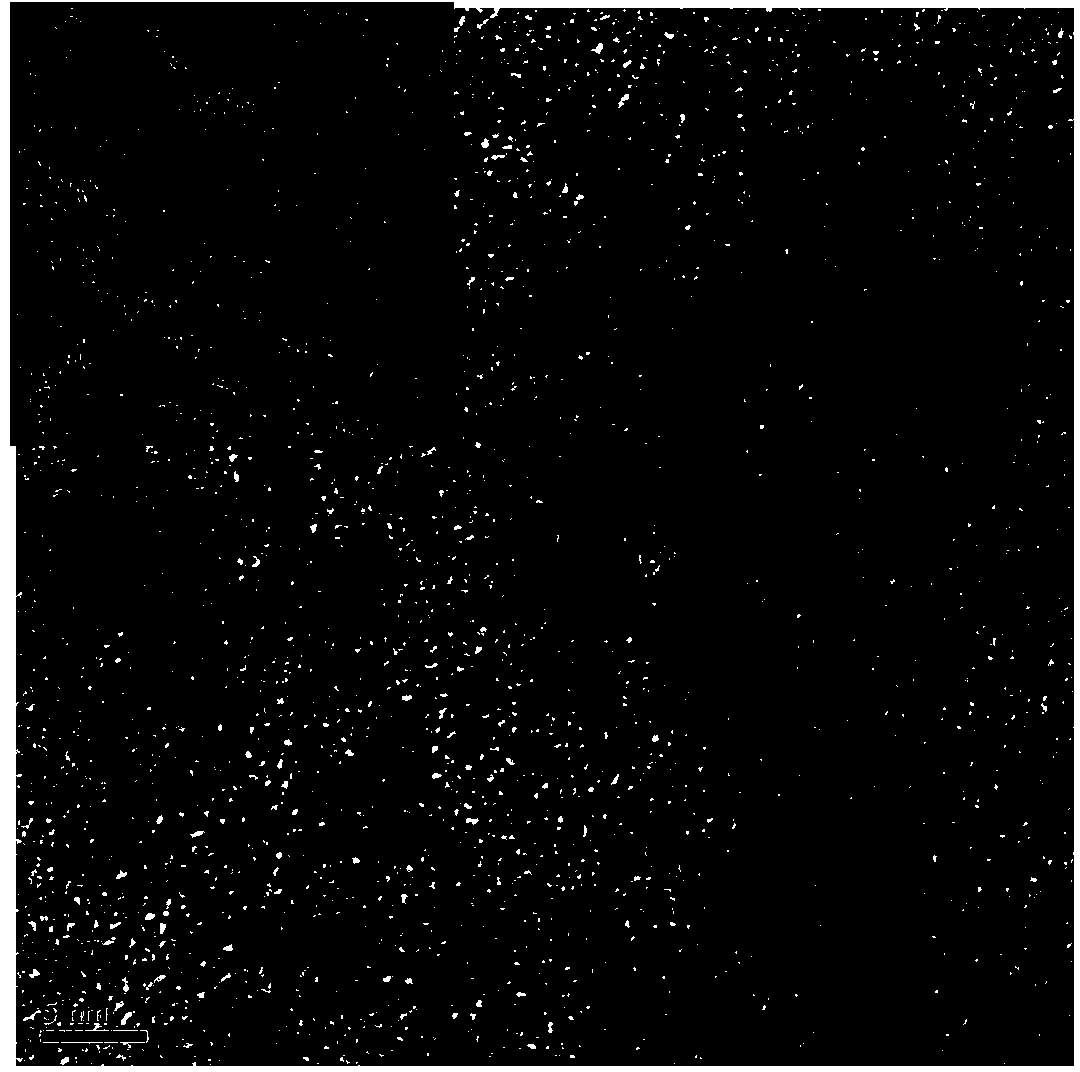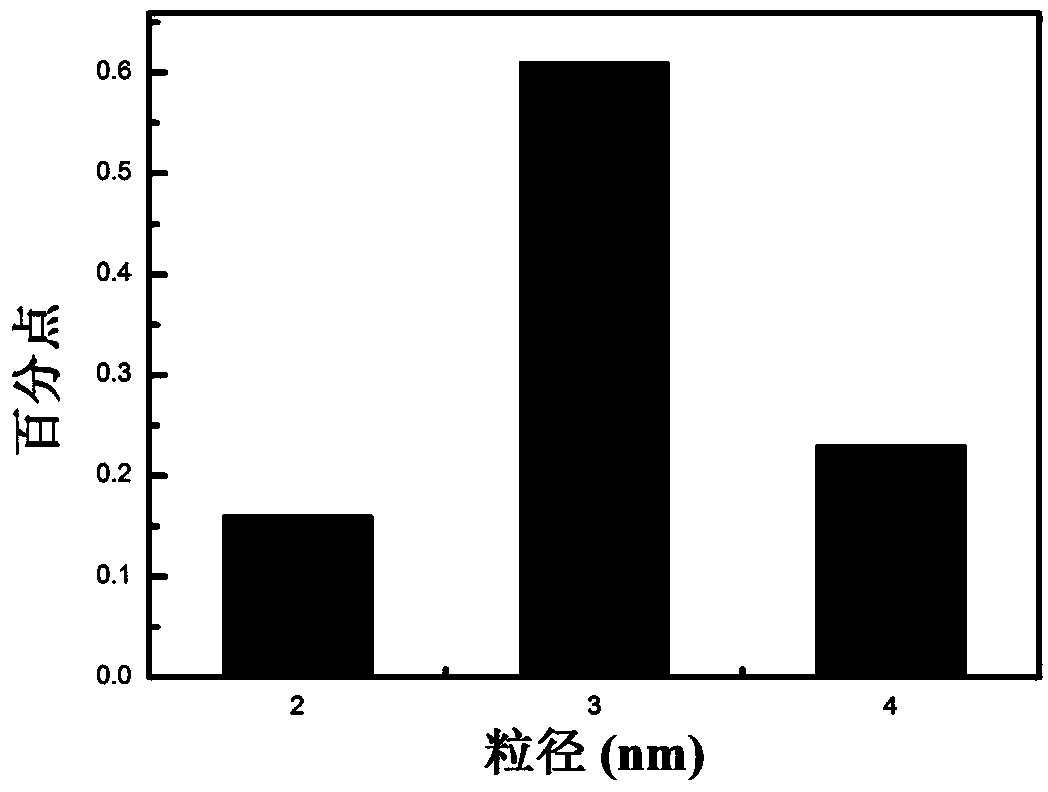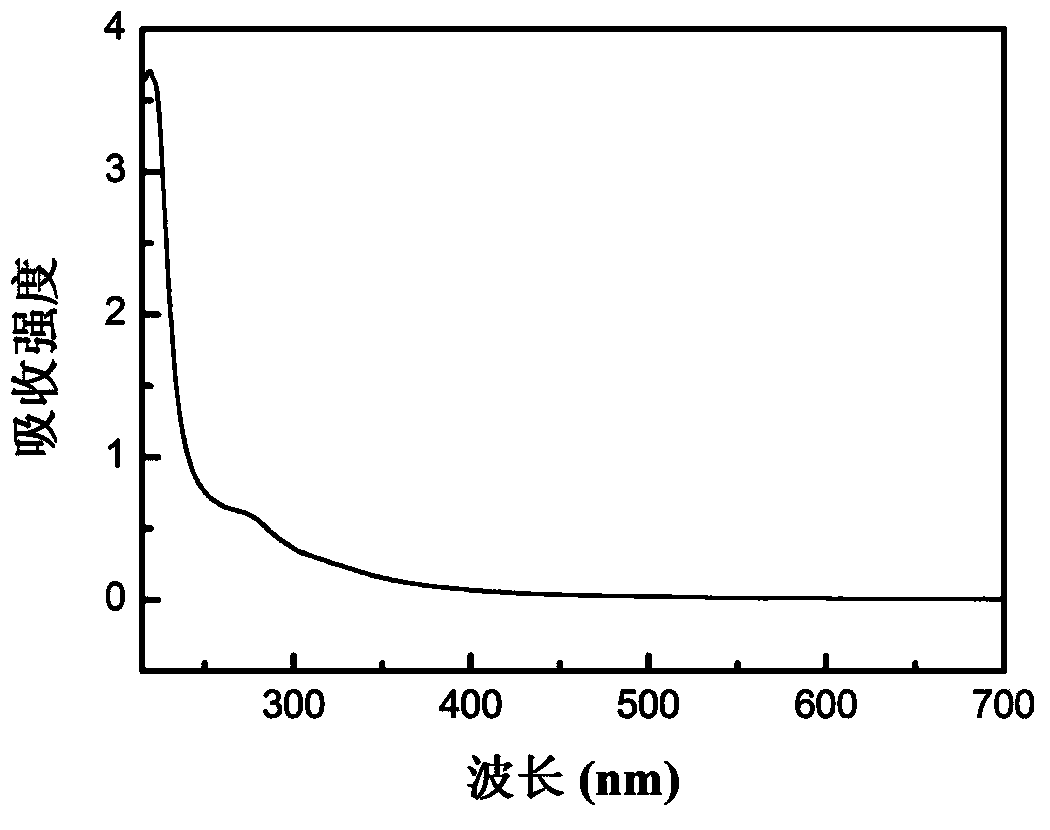Fluorescent nano carbon point
A technology of fluorescent nanometers and carbon dots, which is applied in the field of preparation of fluorescent nanomaterials, can solve the problems of single raw material, low fluorescent quantum yield of fluorescent nanomaterials, expensive equipment, etc., and achieves the effects of simple preparation method, wide source and low price.
- Summary
- Abstract
- Description
- Claims
- Application Information
AI Technical Summary
Problems solved by technology
Method used
Image
Examples
Embodiment Construction
[0025] The present invention will be further described below:
[0026] 1. Preparation of carbon dots: Bright photobacterium Phosphoreum (Photobacterium Phosphoreum) T in the culture bottle 3 Centrifuge and collect the small seeds after culturing to the maximum density, place them in a mixed solution of water and 95% ethanol with a volume ratio of 1:1, pour them into a polytetrafluoroethylene-lined reactor, react at 140°C for 12 hours, and cool Finally, pour out the reacted solution, and the filtered filtrate is dialyzed in ultrapure water for 72 hours with a dialysis bag (Mw 3500), during which the water is changed three times a day. The solution in the dialysis bag was filtered with a 0.22 μm filter membrane, and the obtained filtrate was stored at 4°C.
[0027] 2. Characterization of carbon dots
[0028] (1) Carbon dot shape and size
[0029] figure 1 It is a transmission electron microscope image of carbon dots. It can be seen from the figure that the prepared carbon do...
PUM
| Property | Measurement | Unit |
|---|---|---|
| particle size | aaaaa | aaaaa |
| particle diameter | aaaaa | aaaaa |
Abstract
Description
Claims
Application Information
 Login to View More
Login to View More - R&D
- Intellectual Property
- Life Sciences
- Materials
- Tech Scout
- Unparalleled Data Quality
- Higher Quality Content
- 60% Fewer Hallucinations
Browse by: Latest US Patents, China's latest patents, Technical Efficacy Thesaurus, Application Domain, Technology Topic, Popular Technical Reports.
© 2025 PatSnap. All rights reserved.Legal|Privacy policy|Modern Slavery Act Transparency Statement|Sitemap|About US| Contact US: help@patsnap.com



